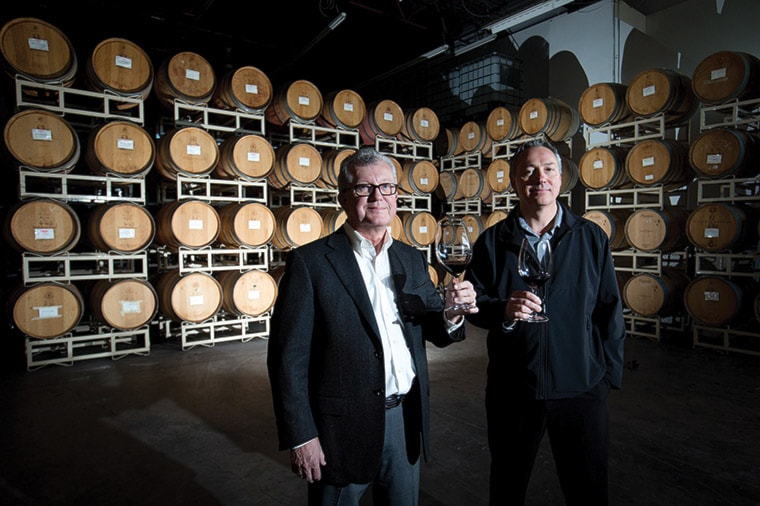NEW WESTMINSTER, B.C. — When you picture a winery, you might imagine a rustic building nestled among breezy rows of grapes, not a cinder block bunker squeezed between a rail switching yard and an urban highway.
But the gritty industrial zone that Pacific Breeze winery calls home, with its tangle of transportation lines, chain link fences and blacktop, hasn’t stopped this urban winery from scoring a string of top awards only a few years after being launched by a couple of amateur winemakers.
“This is my hobby gone wild,” said Pacific Breeze co-owner Maurice Hamilton, who founded the winery in 2005 with his partner, Frank Gregus, after the two met at a wine club in Coquitlam, B.C.
Hamilton, who still works at his original job selling dental supplies, and Gregus, a former Pepsi salesman, have no formal training in making wine, but between them claim more than 50 years of experience producing wine in their garages and basements.
Running a commercial winery was only a dream, until Hamilton visited Woodinville, Wash., where he found small wineries operating without vineyards.
“It gave me the idea I don’t have to grow grapes to have a winery. So that was really the a-hah moment, the revelation that, wait a minute, I can do this,” he said, envisioning a stand-alone winery. He pitched the idea to Gregus, who was quickly on board.
“You put two entrepreneurial sales people in a room and this is what happens,” Gregus said.
With an initial investment of $1.2 million, including bank loans and some of their own money, the partners set up Pacific Breeze, inspired by the urban wineries they’d seen in the U.S. and the so-called “garagist” small winery movement in Europe.
Picking the New Westminster industrial area was a matter of zoning, price and convenience, but Hamilton admits it’s a tough sell when they’re trying to lure people in to sample their products.
“People come into the tasting room all the time and go ‘Oh wow, where’s the winery?’ And you know what they’re asking is ‘Where’s the vineyard?’ Of course they think they’re the same thing, but they’re not. The vineyard is where you grow the grapes; the winery is where you do the manufacturing,” Hamilton said.
The partners say having a vineyard can limit the quality of wine they can make, and their approach is to cherry pick the best grapes they can find in Washington, Oregon and California.
“So rather than have it all in one area, we take the best that each area has to offer for that particular variety of grape,” Gregus said.
Harry Hertschag, executive director of the Vancouver International Wine Festival, said the key issue for him is the source of grapes is made clear on the label so consumers know exactly what they’re getting.
“I think it’s great that Pacific Breeze is doing that because they’re telling you what vineyards its coming from and that’s a good thing,” he said.
He also sees a growing movement of having wineries that are closer to their marketplace.
“I think we’re going to see more of these type of urban wineries, which also allow people to visit them, or be able to use those spaces for wine events without having to drive five hours to the Okanagan to have that experience,” he said.
Hamilton and Gregus currently produce 5,000 cases a year, including reds like the winery’s signature cabernet Killer Cab, a zinfandel called Assazin, and whites like chardonnay and pinot gris.
Their wines proved an immediate hit with Pacific Breeze claiming awards at the first competition it entered, in San Francisco in 2005, before being named winery of the year in 2010 at the InterVin International Wine Awards in Toronto.
“Virtually everything we put in won best in its class,” Hamilton said. “We were really proud of that.”
